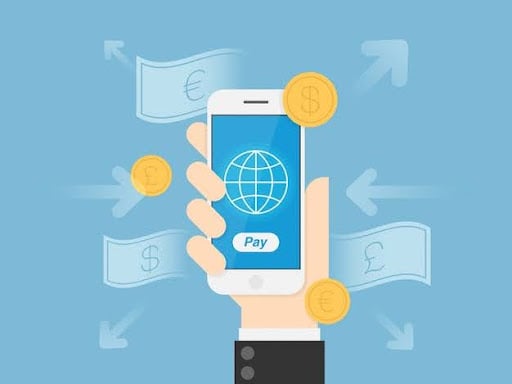Funding Your Forex Account with PayPal: The Good, the Bad, and the Bottom Line

Modern trading platforms rarely agree on anything, yet most of them proudly display the familiar blue-and-white PayPal logo next to “Visa” and “Mastercard.” If you are an average retail trader trying to decide whether PayPal should be your primary gateway for deposits and withdrawals, the conflicting opinions can be dizzying. Below, we strip away the hype and examine the real-world pros and cons of using PayPal to fund your forex account.
Why PayPal Became a Forex Favorite
PayPal’s story in the trading arena started as a side note; brokers merely wanted one more option for small deposits. Over the last decade, however, client demand has turned that option into a headline feature. Traders see PayPal as a bridge between two worlds: the regulated banking system and the fast-moving universe of online markets. That bridge is built on three pillars: speed, familiarity, and perceived safety.
Instant Funding Equals Instant Trading
Bank wires can take up to five business days, and even card deposits sometimes hang in limbo overnight. By contrast, a verified PayPal account can push money to most forex brokers in seconds. Today, many FX brokerages with PayPal deposit options highlight this advantage, knowing it appeals to active traders. That means you can jump on a sudden EUR/USD breakout without waiting for a wire confirmation. For scalpers or news traders, the time value of money alone can justify the PayPal route.
A Layer of Buyer Protection You Can Actually Use
PayPal’s dispute-resolution process was designed for e-commerce, yet it also benefits traders. If a shady broker fails to credit your deposit or drags its feet on a withdrawal, you can open a claim inside your PayPal dashboard. The process is not foolproof. PayPal is not a financial watchdog, but the very possibility of a chargeback makes brokers behave. Many traders see this as an extra layer of leverage they simply don’t have with a bank transfer.
But the Convenience Tax Adds Up
Speed and protection sound great until you read the fine print on fees. PayPal does not run a charity; it earns money by taking a slice of each transaction or by adding a margin to currency conversions. Over time, those slices can eat into your trading capital.
Higher Fees than Cards or Wires
Most brokers pass PayPal’s fees for currency conversions or cross-border transactions, which are often 3-4% above the base exchange rate. PayPal’s merchant/business transaction fees are often in the 2.29%–3.49% + fixed-fee range, depending on the payment method and country. So if you deposit US$2,000 via PayPal under those conditions, you might incur around US$60-80 in fees (assuming 3-4% total), not quite as low or straightforward as “$58 before first trade” in all cases. Card processors charge brokers roughly half that rate, and many brokers absorb the cost entirely. If you deposit frequently, the PayPal premium becomes a noticeable drag on performance.
Conversion Spreads Hide in Plain Sight
PayPal loves to default to its own conversion service if your trading account is denominated in a currency different from your PayPal balance. The company’s spread can be 2.5% above the interbank rate, subtly packaged inside the exchange rate rather than shown as a separate fee. Savvy traders switch their PayPal balance into the broker’s base currency first, but that adds steps and still incurs a smaller spread. Either way, the hidden cost can end up bigger than your broker’s typical commission on a standard lot.
Operational Limits You Need to Know
Even if you accept the higher cost structure, PayPal comes with practical boundaries that don’t always fit an active trader’s lifestyle. Daily and monthly withdrawal caps vary by region, and “Security Holds” can lock an account for 21 days if PayPal’s algorithm smells fraud. That is rare but not unheard of among high-volume traders who move funds in and out several times a week. Tying up capital for three weeks can kill your edge faster than any stop-loss.
Another operational quirk: in some jurisdictions, PayPal classifies forex brokers as “high-risk businesses.” That label triggers extra compliance checks and slows down large withdrawals. You might receive your profits in two tranches: an initial release followed by a pending balance that clears after manual review. Plan your liquidity accordingly.
When PayPal Makes Sense and When It Doesn’t
The decision rarely comes down to a simple yes or no. Instead, think in scenarios:
- Small, frequent deposits. PayPal shines here. The marginal cost of a $100 top-up is negligible compared with the flexibility you gain.
- Emergency funding. If your margin is thin and a surprise data release is minutes away, PayPal’s speed beats any alternative.
- Large, planned cash-outs. A traditional bank wire will probably be cheaper and safer for five-figure withdrawals.
A hybrid approach often works best. Use PayPal as your sprint account for quick infusions for short-term strategies and rely on bank transfers for the marathon of serious capital allocation.
According to DemandSage, the platform now counts over 430 million active accounts worldwide, making it the most widely accepted e-wallet on Earth. That ubiquity ensures almost any reputable broker will support PayPal for deposits. Still, ubiquity does not guarantee suitability.
Quick Tip to Lower Costs Without Ditching PayPal
Open a multi-currency PayPal balance matching your trading account’s base currency. Then link a no-fee digital bank (like Revolut or Wise, depending on your region) to move funds in the same currency. This sidesteps PayPal’s priciest conversions and can shave 1-2% off your total funding cost.
The Bottom Line
PayPal offers a frictionless on-ramp to the forex market, turning an idea into a live position in seconds. That speed, coupled with dispute protection, explains why so many retail traders swear by it. On the flip side, elevated processing fees, hidden conversion spreads, and occasional account holds create a “convenience tax” that grows with your volume. Think of PayPal as a strategy, rather than a blanket. When you combine it with cheaper financing options for bigger transfers, you will have the best of the two worlds: the flexibility of an e-wallet and the cost-effectiveness of conventional banking. Your trading P&L will reward you.





